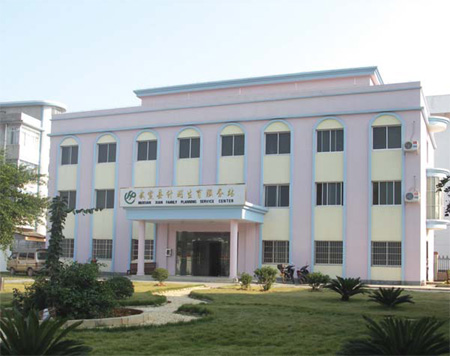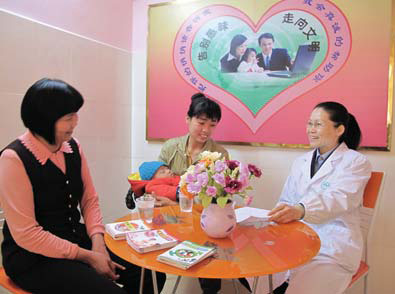Family healthcare program covers more pregnant women
Updated: 2011-10-11 11:39
By Huo Yan and Huang Feifei (China Daily)
|
|||||||||
 |
|
Vans to be used for the maternal healthcare service. |
 |
|
A family planning service office in Wuxuan county. |
 |
|
A doctor offers health consultation for women and infants. |
In the past five years, the Guangxi Zhuang autonomous region has managed to meet its population growth target under the 11th Five-Year Plan (2006-2010), which called for lower birth rates, fewer birth defects, more migrant-worker services, and better life quality.
In the five-year period, the region has increased spending on family development projects. Much of the investment went to maternity healthcare and services.
One innovation in this area was the family healthcare program, where staff members visit needy families regularly to provide vitamins and medicines and other services to pregnant women and to provide health checks for newborn infants.
For each of those five years, more than 5 million people were given family planning and maternity care information and services.
Governments at various levels have built 92 county-level, and 1,126 township-level maternal healthcare offices. One of the highpoints of this has been the increase in the number of birth defect checkups and related care.
In Nanning, the regional capital, hospitals provide free tests for possible birth defects for couples from rural areas.
Similar conditions apply in the cities of Guigang, Beihai, Fangchenggang, Chongzuo, Hechi, Liuzhou, Wuzhou, Qinzhou and Yulin.
In 2010, pregnancy examinations were given to 62.4 percent of the region's young females.
The Guangxi government has also improved services for its population of migrant workers in an attempt to provide as many people as possible with healthcare services.
Greater cooperation
As part of this expansion process, the regional government has increased maternal healthcare cooperation with international organizations.
One of the best examples of this has been a China-United Nation Population Fund program in the county of Liujiang in central Guangxi, which began in 2006.
This has led to a substantial improvement of the area's maternal health situation and allowed more than 80 percent of the area's pregnant women to get coverage by 2010, compared with barely 53 percent in 2006.
Another result of this government intervention has been greater action at the county level in providing maternal health programs.
This has meant improving the obstetrics and gynecology departments at county and township hospitals, providing free pregnancy exams, one-stop service centers for marriage and birth counseling, an insurance system that covers all urbanites and most of the rural people, and maternal health education programs.









